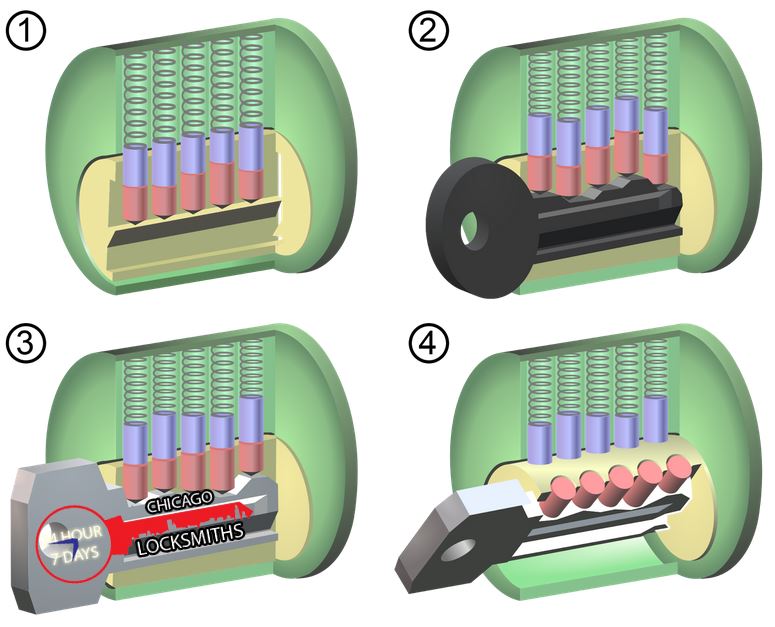
A pin tumbler lock keeps a door securely closed until it’s opened with a key. Of course, it can’t be opened by just any key. The key must be specially made to fit the lock. Consider the various parts of a pin tumbler lock and how a key is used to open one.
The Parts of a Lock and a Key
The body of a pin tumbler lock is known as a bible. The springs, the driver pins and the key pins are all parts of a lock’s bible. The plug of a lock is located directly beneath the bible. The body of a key is made up of notches and ridges. Sometimes the ridges are called teeth. Each key is unique to a particular lock. In short, a key’s notches and ridges have a design that will only fit one lock.
How a Key Turns in a Pin Tumbler Lock
The springs of a lock as well as the driver pins are all the same length and size. The key pins are different sizes. When a key is put into a lock, the lock will open or close if the key pins correspond with the ridges and notches in the key. If the key pins inside a pin tumbler lock do not correspond with the ridges and notches of a key, the lock will not open. When a person puts the correct key into a lock, the driver pins will drop down and the key pins will move up. These pins line up at a point in the lock called the shear line. When this happens, the key will turn and the door will unlock. A pin tumbler lock is a precise instrument. The pins must all line up before a person can turn the key and disengage the lock.
Issues That Make a Key Unusable
Sometimes a key that goes with a particular pin tumbler lock doesn’t work. There are a variety of reasons why this happens. For one, the notches of the key may have been filed down or changed in some way. The key pins in a lock do not change in design. Consequently, if someone files down the ridges on a key, it will no longer correspond to the design of the key pins. This makes the key worthless. Sometimes a key can be bent making it impossible to fit it into a lock. There are also times when a user breaks a key, leaving part of it inside the lock. This can happen when a lock is old and the person turns the key with too much force. Once a key is broken, a new one must be made to replace it.
Finally, a pin tumbler lock is a basic type of lock that’s easy to use and secure. If a key is difficult to turn in a lock, sometimes a little bit of WD-40 can loosen the lock and make it easier to put the key inside it.
